Abstract
Phentolamine caused a rhythmic contraction concentration-dependently without affecting resting tone in the detrusor muscle. Prazosin, yohimbine, propranolol, noradrenaline, clonidine or isoprenaline failed to cause the rhythmic contraction. These agents did not modify the response to phentolamine suggesting no involvement of alpha- or beta-adrenoceptors in the response to phentolamine. Chlorpheniramine, cimetidine, methysergide, SK&F 83566, atropine, bretylium, hemicholinium or tetrodotoxin failed to inhibit the response to phentolamine. These results suggest that the effect of phentolamine is not mediated through histaminergic, 5-hydroxytryptaminergic, dopaminergic or cholinergic systems, or through transmitter release from nerve endings. Prostaglandin F2 alpha (PGF2 alpha), arachidonic acid but not ATP caused rhythmic contractions which resembled the response to phentolamine. Potassium also caused a contraction with increasing resting tone. Following treatment with nifedipine, or incubation in a Ca2+-free medium, the responses to phentolamine, PGF2 alpha, arachidonic acid and potassium were markedly inhibited or abolished. Cyclo-oxygenase inhibitors such as indomethacin, aspirin and corticosterone inhibited or abolished the responses to phentolamine and arachidonic acid but did not inhibit the response to PGF2 alpha. The results suggest that the phentolamine-induced rhythmic contraction may, at least in part, result from the cyclo-oxygenase metabolite of arachidonic acid in guinea-pig detrusor muscles and a consequent increase in the transmembrane Ca2+-influx.
Full text
PDF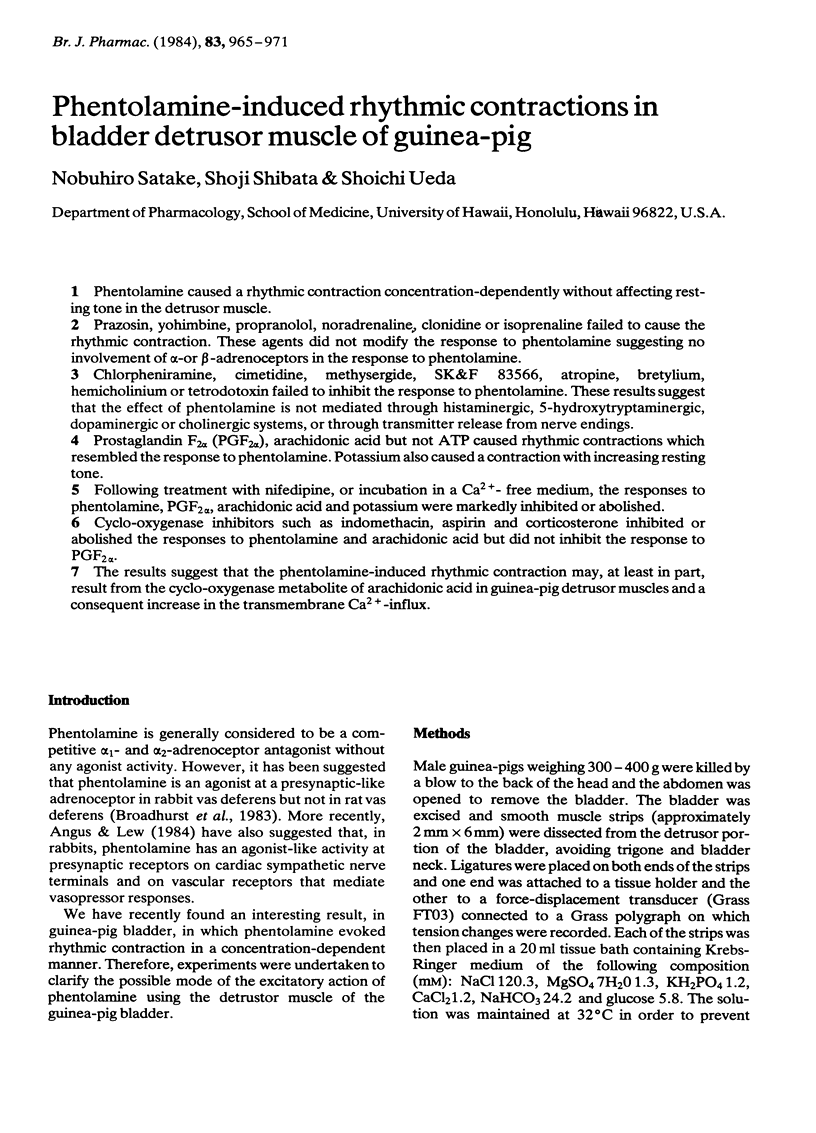
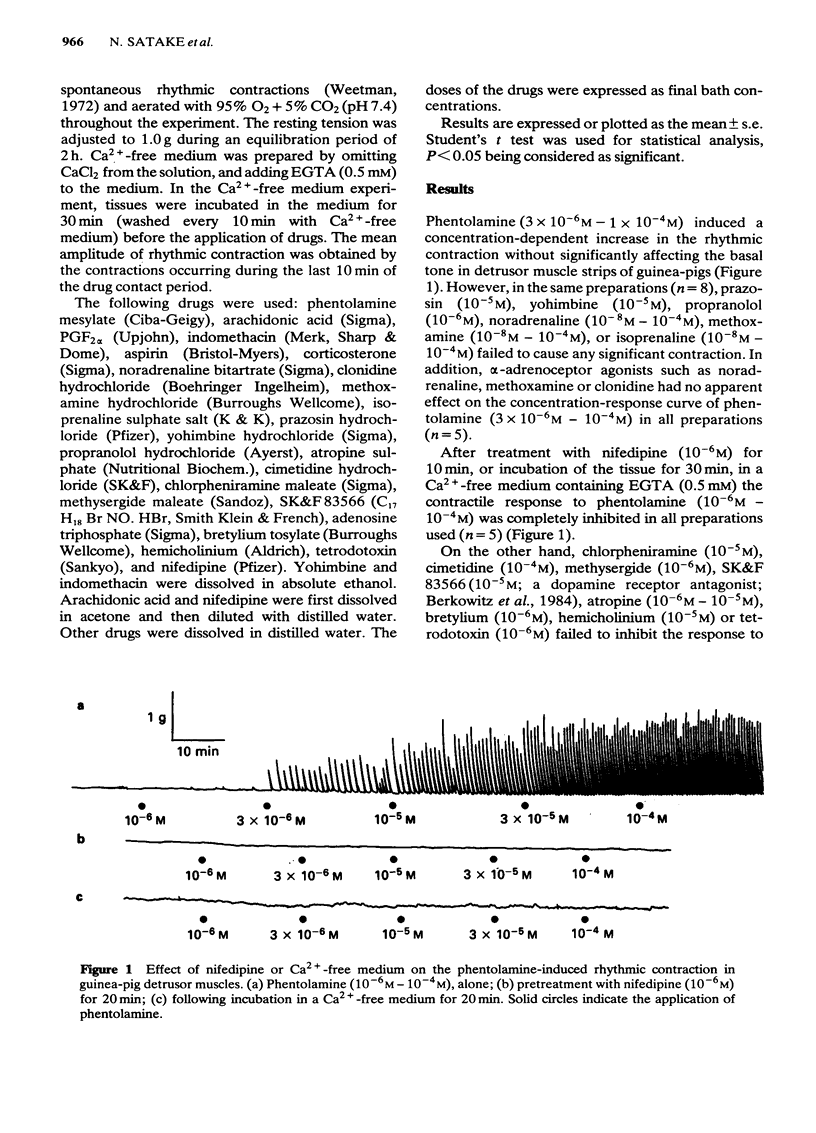
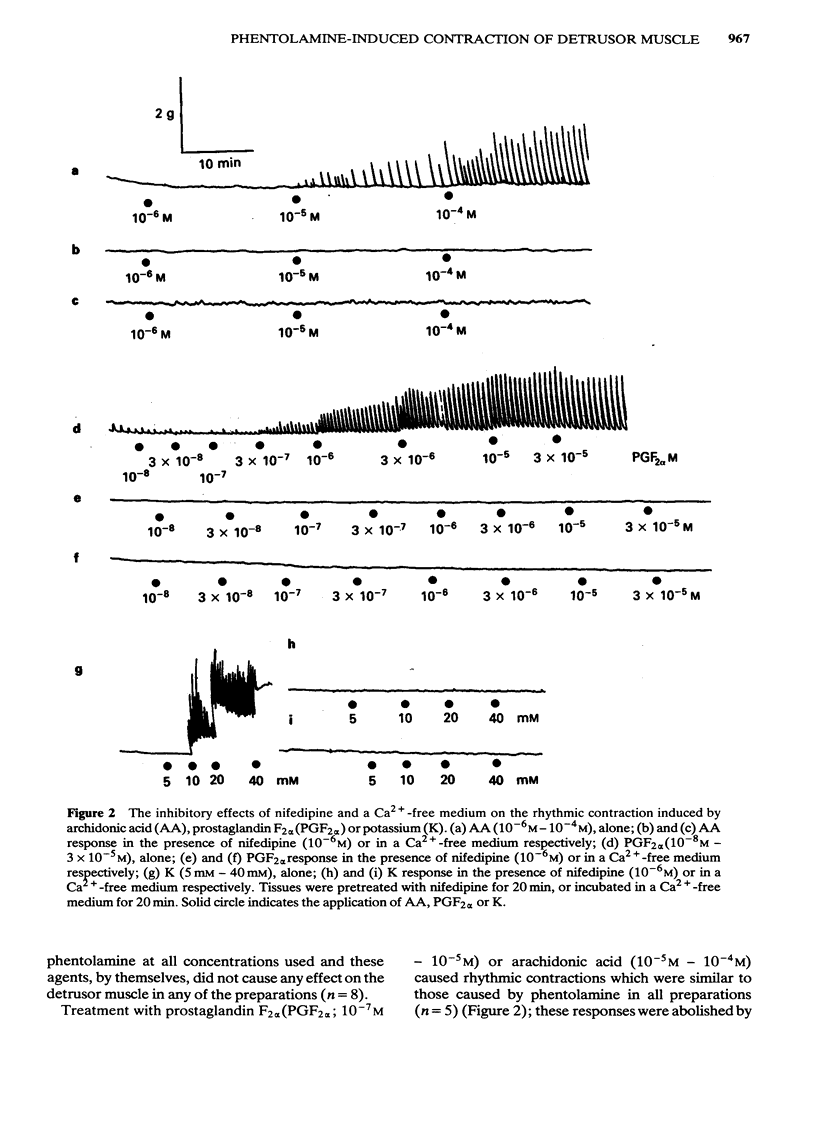
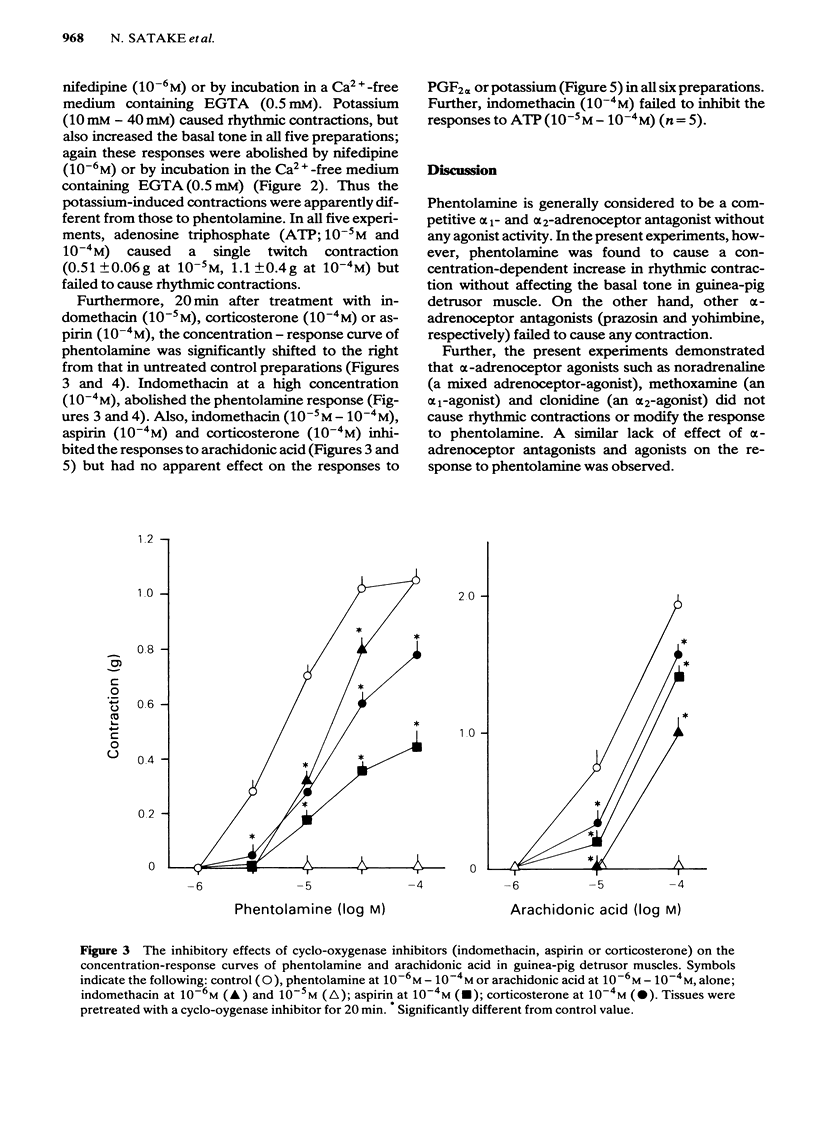
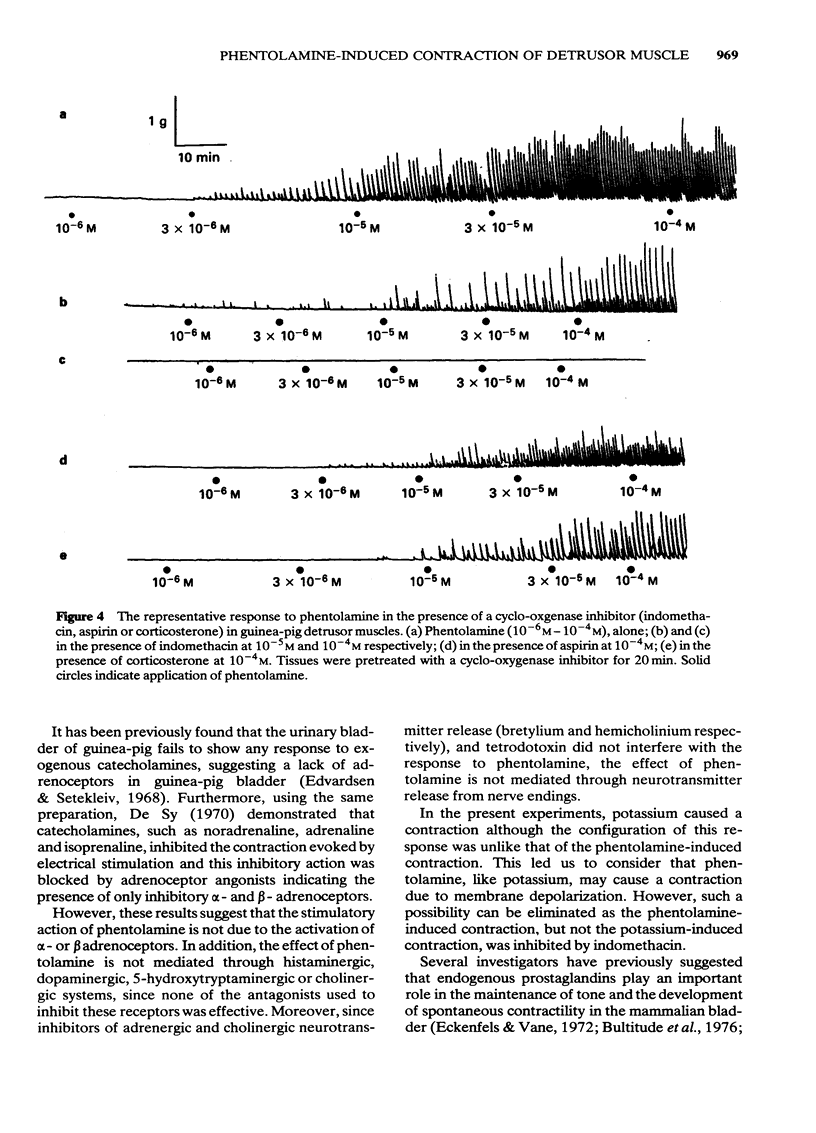
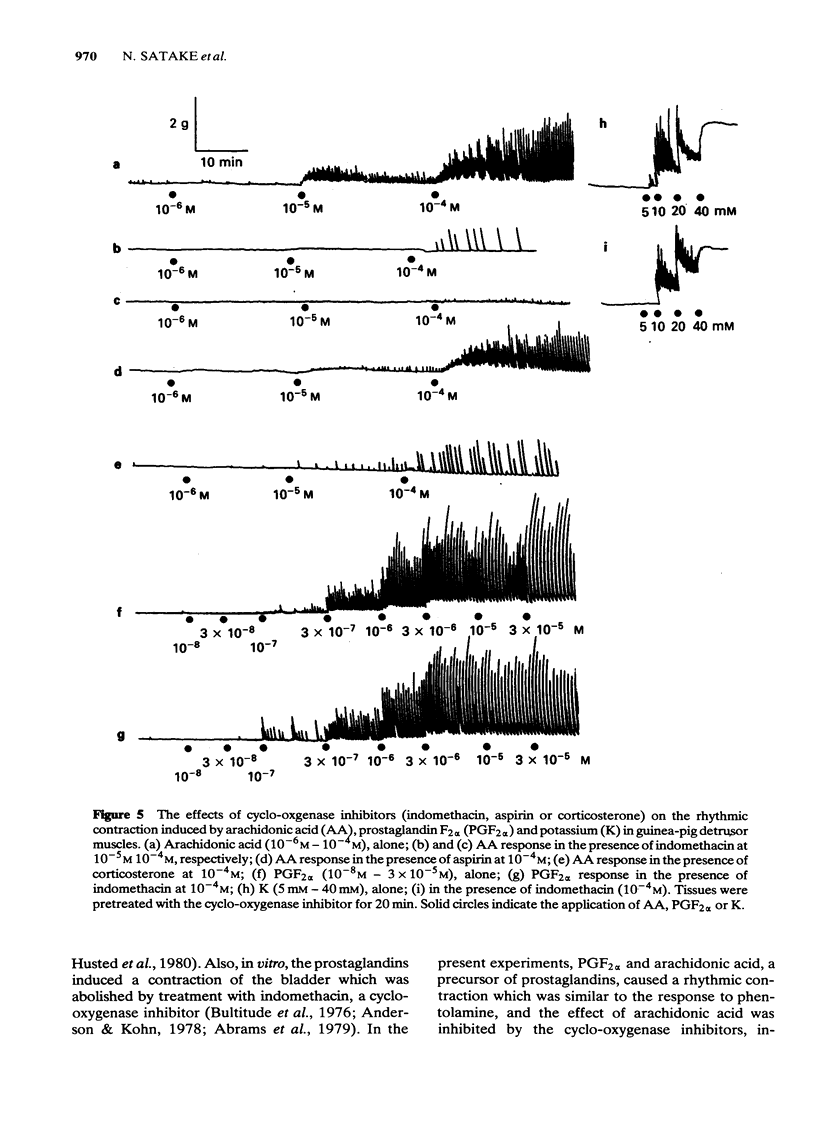
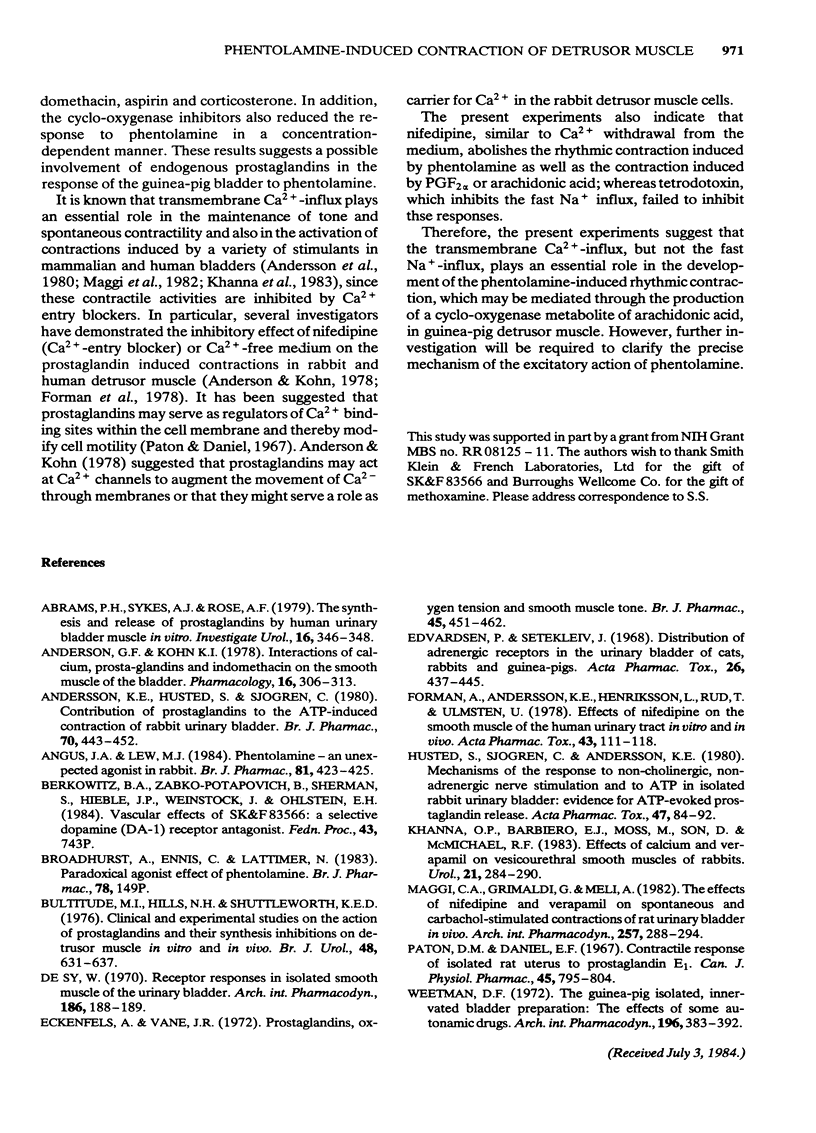
Selected References
These references are in PubMed. This may not be the complete list of references from this article.
- Abrams P. H., Sykes J. A., Rose A. J., Rogers A. F. The synthesis and release of prostaglandins by human urinary bladder muscle in vitro. Invest Urol. 1979 Mar;16(5):346–348. [PubMed] [Google Scholar]
- Anderson G. F., Kohn K. I. Interactions of calcium, prostaglandins and indomethacin on the smooth muscle of the bladder. Pharmacology. 1978;16(6):306–313. doi: 10.1159/000136786. [DOI] [PubMed] [Google Scholar]
- Andersson K. E., Husted S., Sjögren C. Contribution of prostaglandins to the adenosine triphosphate-induced contraction of rabbit urinary bladder. Br J Pharmacol. 1980 Nov;70(3):443–452. doi: 10.1111/j.1476-5381.1980.tb08722.x. [DOI] [PMC free article] [PubMed] [Google Scholar]
- Angus J. A., Lew M. J. Phentolamine--an unexpected agonist in the rabbit. Br J Pharmacol. 1984 Mar;81(3):423–425. doi: 10.1111/j.1476-5381.1984.tb10094.x. [DOI] [PMC free article] [PubMed] [Google Scholar]
- Bultitude M. I., Hills N. H., Shuttleworth K. E. Clinical and experimental studies on the action of prostaglandins and their synthesis inhibitors on detrusor muscle in vitro and in vivo. Br J Urol. 1976;48(7):631–637. doi: 10.1111/j.1464-410x.1976.tb06711.x. [DOI] [PubMed] [Google Scholar]
- De Sy W. Receptor responses in isolated smooth muscle of the urinary bladder. Arch Int Pharmacodyn Ther. 1970 Jul;186(1):188–189. [PubMed] [Google Scholar]
- Eckenfels A., Vane J. R. Prostaglandins, oxygen tension and smooth muscle tone. Br J Pharmacol. 1972 Jul;45(3):451–462. doi: 10.1111/j.1476-5381.1972.tb08101.x. [DOI] [PMC free article] [PubMed] [Google Scholar]
- Edvardsen P., Setekleiv J. Distribution of adrenergic receptors in the urinary bladder of cats, rabbits, and guinea-pigs. Acta Pharmacol Toxicol (Copenh) 1968;26(5):437–445. doi: 10.1111/j.1600-0773.1968.tb00462.x. [DOI] [PubMed] [Google Scholar]
- Forman A., Andersson K. E., Henriksson L., Rud T., Ulmsten U. Effects of nifedipine on the smooth muscle of the human urinary tract in vitro and in vivo. Acta Pharmacol Toxicol (Copenh) 1978 Aug;43(2):111–118. doi: 10.1111/j.1600-0773.1978.tb02244.x. [DOI] [PubMed] [Google Scholar]
- Husted S., Sjögren C., Andersson K. E. Mechanisms of the responses to non-cholinergic, non-adrenergic nerve stimulation and to ATP in isolated rabbit urinary bladder: evidence for ADP evoked prostaglandin release. Acta Pharmacol Toxicol (Copenh) 1980 Aug;47(2):84–92. doi: 10.1111/j.1600-0773.1980.tb01845.x. [DOI] [PubMed] [Google Scholar]
- Khanna O. P., Barbieri E. J., Moss M., Son D., McMichael R. F. Effects of calcium and verapamil on vesicourethral smooth muscle of rabbits. Urology. 1983 Mar;21(3):284–290. doi: 10.1016/0090-4295(83)90088-2. [DOI] [PubMed] [Google Scholar]
- Maggi C. A., Grimaldi G., Meli A. The effects of nifedipine and verapamil on spontaneous and carbachol-stimulated contractions of rat urinary bladder "in vivo". Arch Int Pharmacodyn Ther. 1982 Jun;257(2):288–294. [PubMed] [Google Scholar]
- Paton D. M., Daniel E. E. On the contractile response of the isolated rat uterus to prostaglandin E1. Can J Physiol Pharmacol. 1967 Sep;45(5):795–804. doi: 10.1139/y67-094. [DOI] [PubMed] [Google Scholar]
- Weetman D. F. The guinea-pig isolated, innervated bladder preparation: the effects of some autonomic drugs. Arch Int Pharmacodyn Ther. 1972 Apr;196(2):383–392. [PubMed] [Google Scholar]


